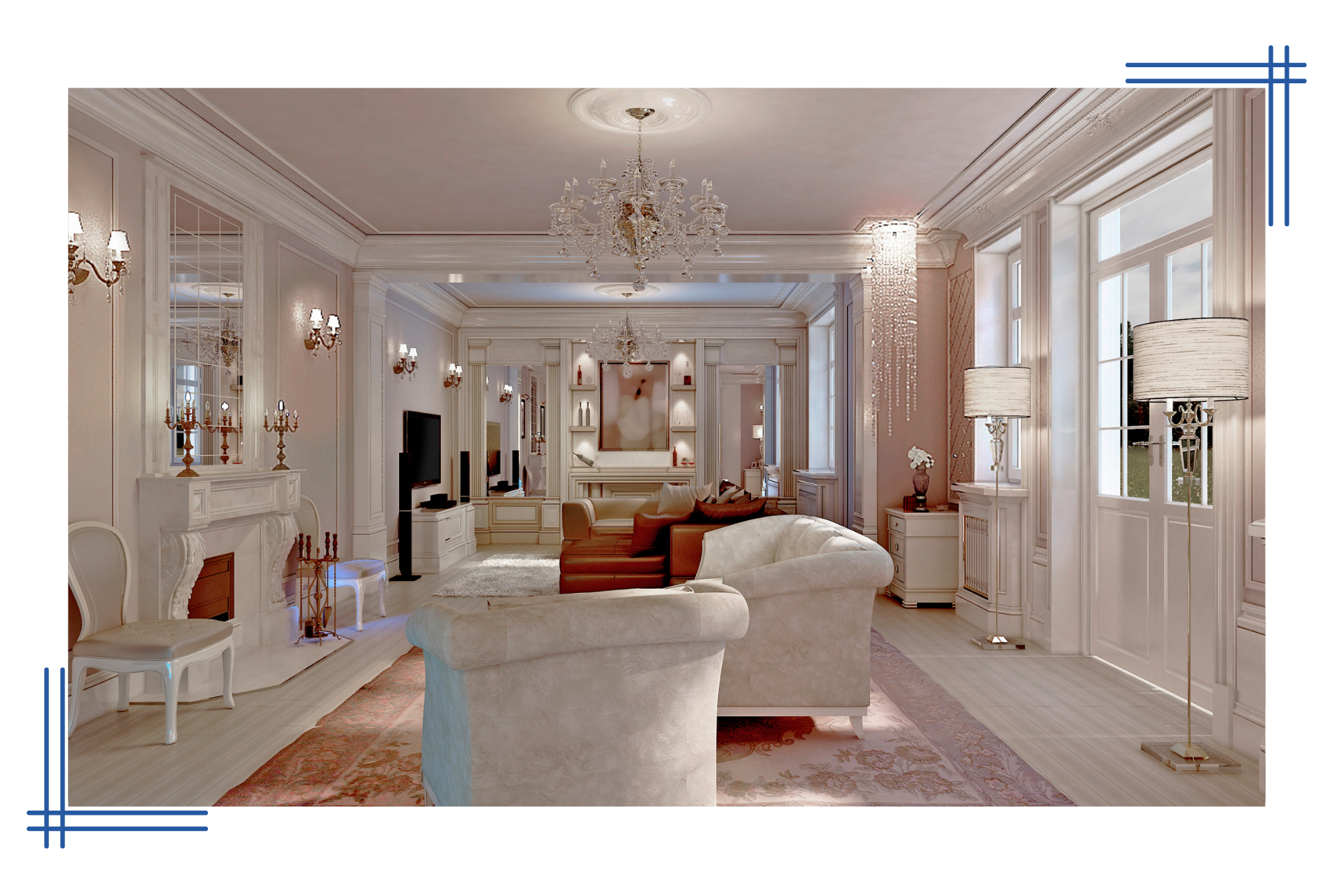
Slide title
Write your caption hereButton
Electrical Design

Slide title
Write your caption hereButton
Electrical Design
Electrical design serves as the foundation of well-functioning residential or commercial spaces. It encompasses the detailed planning of systems, including the arrangement of lighting, power outlets, and the infrastructure required to support various appliances and machines. Effective design ensures that homes are not only adequately powered but also tailored to meet the daily needs and preferences of their residents, enhancing both functionality and comfort.
Each application has specific requirements and areas of concern to consider during design. Some important ones per sector are:
Residential Electrical Design
- Load Calculations: Proper load calculations are essential for ensuring that the system is neither overloaded nor underutilized, which can prevent potential hazards such as electrical fires and also ensure the system's efficiency. It involves assessing the power consumption needs of everything from small appliances and lighting to large heating and cooling systems.
- Circuits And Mapping: Effective circuit design ensures that power is adequately and safely supplied to every corner of the home, with considerations for future expansions or modifications. Mapping helps in maintaining balance across different circuits, thereby preventing overloading and promoting easier troubleshooting and maintenance.
- Tailored Lighting Solutions: This includes the choice between various types of lighting such as LED and fluorescent options. LED lighting is particularly favored for its energy efficiency and longevity, while fluorescent lights are often chosen for areas requiring bright, widespread illumination.
- Smart Home Systems: These systems integrate various home functions—from lighting and heating to security and entertainment—into a single, user-friendly interface. Smart home systems enhance convenience, energy efficiency, and safety, allowing residents to control their home environments from their smartphones or voice-activated devices.
- Backup Power Options: Solutions like generators and battery backup systems ensure that homes remain operational during power failures. These systems can be designed to kick in automatically when power is lost, maintaining critical functions such as heating, refrigeration, and lighting.
- Together, these components ensure that homes are not only safe and functional but also adaptable to the needs and lifestyles of modern residents. They reflect a comprehensive approach to handling the electrical demands of today’s technologically driven homes.
Commercial Electrical Design
- Understanding Three-Phase Power Systems: A fundamental aspect of commercial electrical systems is the use of three-phase power, which is important for buildings that require high power levels and for equipment that demands a constant energy load. Three-phase power systems are more efficient at delivering large loads of electricity smoothly and continuously. This type of power distribution is essential in settings where heavy machinery is used, as it helps prevent power dips and ensures the stable operation of equipment.
- Specialized Wiring, Switches, And Outlets: This includes the installation of heavy-duty wiring, industrial-grade switches, and outlets that can support the operation of high-powered machinery and equipment. Such setups not only cater to higher power demands but also ensure that installations meet rigorous safety standards to prevent hazards like electrical fires and equipment malfunctions.
- Diverse Lighting Solutions: Lighting in commercial settings serves multiple purposes beyond mere illumination. It needs to be tailored to specific industrial needs, such as bright, uniform lighting for manufacturing floors, or softer, more focused lighting for office spaces. Emergency lighting is also a critical component of commercial electrical design. It is strategically installed to ensure visibility during power outages or other emergencies, facilitating safe evacuations and operations during such incidents.
- Energy Management Systems And Cost Reduction: By monitoring and controlling the energy consumption of connected devices and systems, these energy management solutions can identify inefficiencies and adjust power usage dynamically. This not only reduces operational costs but also contributes to a business’s sustainability goals by reducing its overall environmental impact.
Industrial Electrical Design
- Strict Adherence To Codes: Codes provide guidelines that ensure electrical systems are installed and maintained to prevent hazards such as fires, shocks, and other dangerous incidents. Industrial designers must be deeply familiar with these codes and ensure installations and operations are compliant. Regular updates and audits are essential, as electrical standards may evolve to accommodate new technologies or address new safety concerns.
- Potential For Complex Systems And Higher Safety Risks: Industrial settings often involve the use of complex systems to power heavy machinery and sustain large-scale production activities. This complexity increases the potential for safety risks, making rigorous design and regular maintenance imperative. Industrial design must incorporate robust safety protocols, including emergency shut-offs, redundant systems to handle failures, and protective gear for personnel.
- Energy Efficiency In Industrial Settings: Industrial designers often implement advanced energy management systems that can monitor and control energy use across various processes. These systems help in identifying energy waste, optimizing machine operation times, and scheduling energy-intensive tasks during off-peak hours to reduce energy costs. Furthermore, advancements in technology such as the integration of renewable energy sources (like solar or wind power) and the use of high-efficiency motors and transformers are also considered.
In conclusion, industrial design requires a meticulous approach that prioritizes safety, compliance, and efficiency. The complexity of these systems demands skilled design and ongoing management to ensure that industrial facilities operate safely and smoothly while minimizing operational costs and environmental impact.
At the heart of Summit Electrical Solutions' success is our expertise in design. We recognize that the foundation of efficient and safe electrical system is its design. Our team of approaches each project with a comprehensive understanding of electrical dynamics, ensuring that every design is not only optimized for the specific needs of the space but also scalable and future-proof.
Contact us today for a free estimate.
Frequently Asked Electrical Design Questions
Q1. How does the presence of a large aquarium affect the electrical design of a home or business?
A1. Installing a large aquarium requires careful consideration, especially concerning dedicated circuits, grounding, and moisture protection. Aquariums often need stable, continuous power for filters, heaters, and lights, which can significantly increase the load on a home's or business's electrical system.
Q2. Can the layout of outlets be customized to blend with artistic themes in homes or boutique shops?
A2. Yes, the layout and appearance of outlets can be customized to align with specific artistic themes or interior designs. Designers can integrate outlets that match the wall patterns, colors, or artistic elements of a room. Specialty covers and hidden outlets are also options to maintain the aesthetic integrity while ensuring functionality and adherence to safety standards.
Q3. What considerations are taken for historical buildings undergoing upgrades?
A3. Electrical upgrades in historical buildings must balance modern efficiency and strict preservation standards. Designers must work closely with conservation specialists to ensure that new wiring, fixtures, and modern conveniences are incorporated without damaging the building's historical integrity. Techniques might include using existing pathways for wiring or choosing fixtures that mimic the era of the building.
All Rights Reserved | Summit Electrical Solutions
